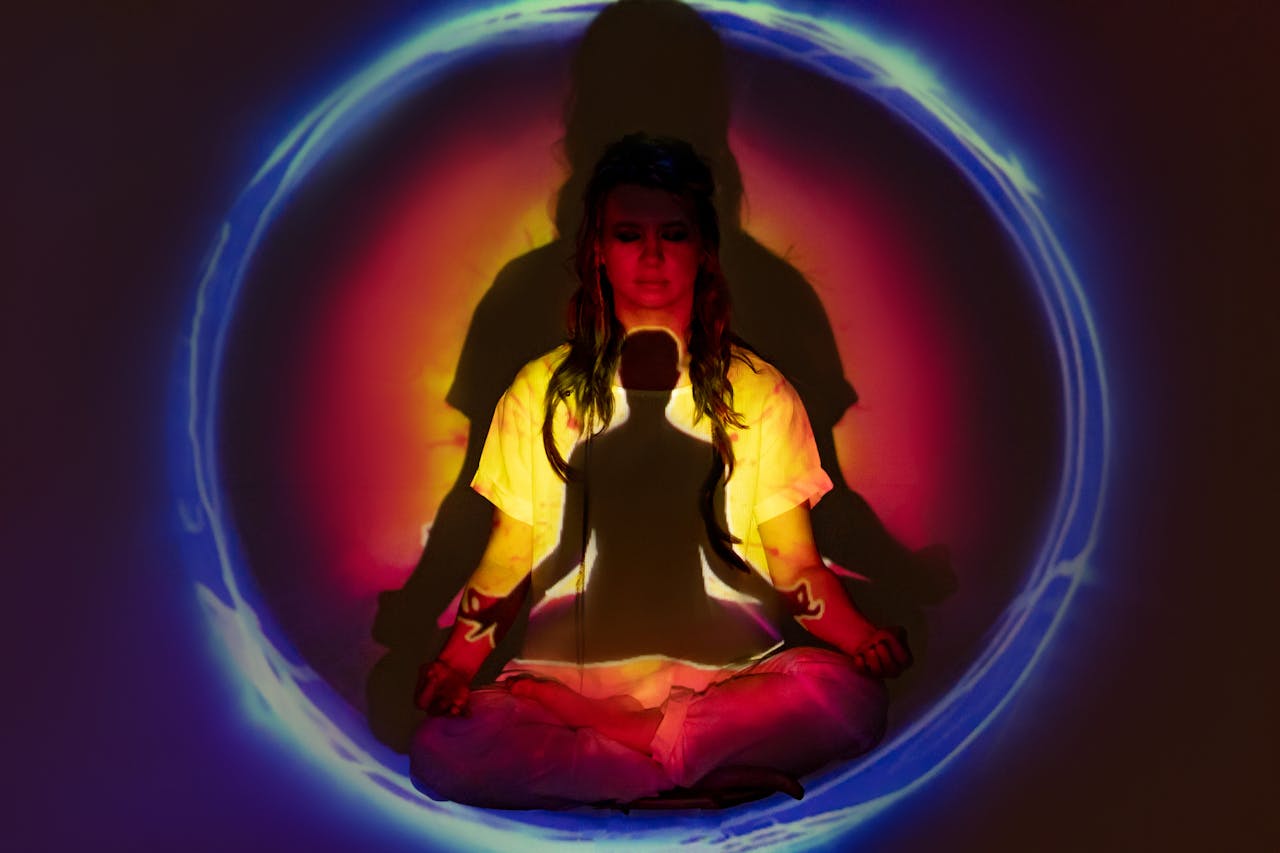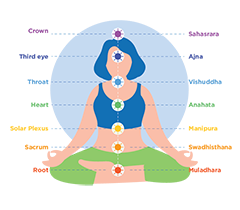
Table of Contents
Kundalini and chakras are integral to the ancient Indian spiritual tradition and have gained a significant following in the modern world.
Key Takeaways
- The muladhara chakra is the base, while the ajna chakra (the sixth chakra) and sahasrara chakra (crown) lead to higher consciousness.
- Awakening the kundalini energy moves through these chakras, including the anahata chakra (the fourth chakra).
- Awaken Kundalini energy carefully to avoid kundalini syndrome or overwhelming sensations.
- Kundalini activation boosts connection to divine energy and spiritual growth.
- Meditation and yoga help balance energy between the chakras.
Kundalini, derived from the Sanskrit word 'kundal,' means coiled or circular and refers to the “sleeping” energy located at the base of the spine.
On the other hand, Chakras refer to the seven energy centers along the spine, running from the base to the crown of the head.
Once awakened, Kundalini's energy rises through the chakras, activating and balancing them. This awakening brings about enlightenment and profound personal transformation. As such, Kundalini yoga and meditation have recently become increasingly popular amongst spiritual communities.
What is Kundalini?
Kundalini is a powerful, dormant energy that lies coiled at the base of the spine. The concept of Kundalini originates from ancient Indian scriptures and has been an essential aspect of Hinduism for centuries. According to Hindu tradition, Kundalini is the divine feminine energy that resides at the base of the spine, waiting to be awakened.
The coiled snake is a common symbol associated with Kundalini. This symbol represents the dormant energy within us, waiting to be awakened. The serpent is coiled three and a half times around the base of the spine, symbolizing the three-and-a-half turns that Kundalini takes as it rises through the chakras.
When awakening the Kundalini energy, it rises through the central channel, or Sushumna, linked to the flow of Udana prana and Vishuddhi chakra, the starting point of Udana Prana. As Kundalini rises, it activates and energizes each of the seven chakras associated with different types of prana. The upward flow of Udana prana, in coordination with the awakening of Kundalini energy, is believed to lead to spiritual awakening.
Kundalini is said to be the force that animates all living things and is responsible for the evolution of human consciousness. Through Kundalini yoga and meditation, this energy can be awakened and harnessed, leading to a profound transformation of body, mind, and spirit.
Kundalini Awakening
The serpent power, also called Kundalini Shakti, flows through the chakras. There are seven chakras, each with a unique function and associated with different human body parts. Kundalini awakening occurs as the stagnant energy rises through each energy center. Each chakra plays a crucial role in this process, and understanding their functions is essential for a successful Kundalini awakening.
Awakening can be achieved through various practices such as yoga, meditation, and breath control. The signs of Kundalini awakening can vary from person to person. Common signs include intense heat or energy in the body, involuntary movements or shaking, and a sense of bliss or ecstasy.
It's important to note that Kundalini awakening is not always a pleasant experience and can sometimes lead to uncomfortable or even distressing sensations. This is why it's important to approach it cautiously and seek an experienced teacher's guidance.
The Seven Chakra System
 The seven chakras are the root chakra, sacral chakra, solar plexus chakra, heart chakra, throat chakra, third eye chakra, and crown chakra. Each chakra is associated with a specific color and has a different function.
The seven chakras are the root chakra, sacral chakra, solar plexus chakra, heart chakra, throat chakra, third eye chakra, and crown chakra. Each chakra is associated with a specific color and has a different function.
Muladhara chakra, located at the base of the spine, is associated with survival instincts and grounding. Svadhishthana chakra, found in the lower abdomen, reigns sexuality, creativity, and emotions.
The solar plexus chakra, or Manipura, placed in the upper abdomen, is responsible for willpower and self-confidence. The heart, or Anahata chakra, found in the center of the chest, governs love, compassion, and connection.
Vishuddha chakra, located in the throat, is associated with self-expression and communication. Ajna chakra, located between the eyebrows, is responsible for intuition and spiritual awareness. The seventh, Sahasrara chakra in Sanskrit, is located at the top of the head and is associated with divine consciousness and enlightenment.
The Effects of Kundalini Energy Flow on the Body
Kundalini awakening can have profound effects on the physical body. As Kundalini energy travels up the spinal column, activating each chakra along the way, it directly impacts various organs and systems in the body.
The nervous system, in particular, is closely connected to Kundalini energy. The awakening can lead to an increase in the production of neurotransmitters and changes in brain function, resulting in altered states of consciousness and heightened awareness.
Benefits of Kundalini awakening can include a greater sense of spiritual connectedness, increased creativity and intuition, enhanced physical health, improved mental health, and increased self-awareness. It's important to note that Kundalini awakening can also negatively affect the body, especially if it occurs too quickly or without proper guidance.
Prana-Apana: The Kundalini Opposite
Kundalini is not the only force at work in the human body. Prana and Apana are two opposing forces that also play an important role in life energy, and they are closely connected to the Kundalini.
Prana is the upward-moving life force that travels from the base of the spine toward the crown of the head, while Apana is the downward-moving force that flows in the opposing direction, from the crown of the head toward the base of the spine.
An imbalance of Prana and Apana energies can lead to blockages in the energy centers, hindering the awakening of Kundalini. Too much Prana can cause hyperactivity, while too much Apana can cause lethargy and a lack of energy.
Several techniques can help to bring balance between Prana and Apana energies. One is the practice of Pranayama, or breath control, which helps to regulate the flow of both energies in the body. Another is the yoga asana practice which helps to stimulate the energy centers using movement and balance the flow.
By balancing Prana and Apana, one can help to remove blockages and obstacles that prevent the awakening of Kundalini and promote greater health and vitality in the body and mind.
Kundalini Laziness
In the ancient Hindu tradition, the third chakra, or Manipura, is believed to be responsible for motivation, willpower, and energy. Like the Manipura chakra energy, the flow of Kundalini can significantly impact motivation and energy levels.
When the Kundalini energy is blocked or is out of balance in the third chakra, it can lead to feelings of laziness, lack of motivation, and a general lack of energy. Engaging in various activities such as yoga, meditation practices, and breathwork is useful for balancing the third chakra and increasing motivation and willpower. In Kundalini yoga, some specific exercises and meditations focus on activating the Manipura chakra and increasing the flow of Kundalini energy.
Frequently Asked Questions About Kundalini Chakra
Kundalini mantra chanting is used for?
The chanting activates and awakens the Kundalini energy within the body.
What does the coccygeal plexus refer to?
The coccygeal plexus refers to a network of nerves at the base of the spine associated with the root chakra.
What does visualization of Shakti in the central channel mean?
Visualization of Shakti in the central channel refers to a technique used in Kundalini meditation where one imagines a stream of energy rising from the base of the spine to the crown of the head.
What does the term bhogavati mean?
The term bhogavati refers to the concept in Kundalini yoga that refers to the material world and the distractions that can prevent spiritual progress.
References
- “Understanding the Chakras and Kundalini Energy” - Understanding the Chakras and Kundalini Energy | The Art Of Living Global
- “A Journey Through the 8 Chakras with Kundalini Yoga” -https://www.3ho.org/blog-new/a-journey-through-the-8-chakras-with-kundalini-yoga/
- “Kundalini and Chakras: A Guide to Energy Centers and their Significance” - Kundalini and Chakras: A Guide to Energy Centers and their Significance in Yoga
Disclaimer
The contents of this article are provided for informational purposes only and are not intended to substitute for professional medical advice, diagnosis, or treatment. It is always recommended to consult with a qualified healthcare provider before making any health-related changes or if you have any questions or concerns about your health. Anahana is not liable for any errors, omissions, or consequences that may occur from using the information provided.

By: Clint Johnson
Clint is the driving force and founder of Anahana. Clint teaches Yoga, Pilates, mindful breathing, and meditation, catering to a global community of students and teachers.
